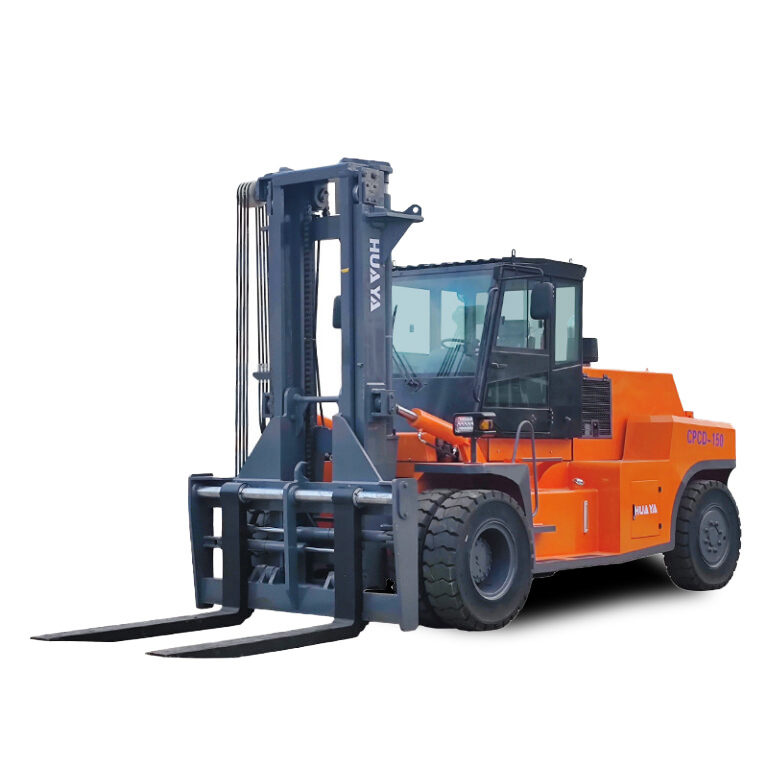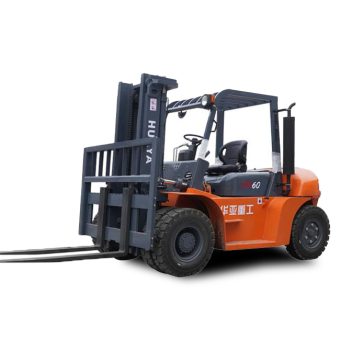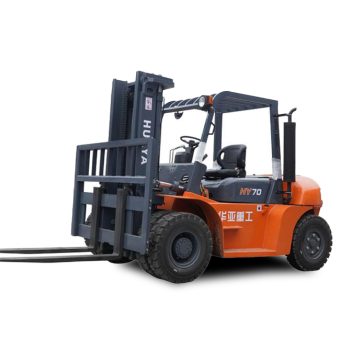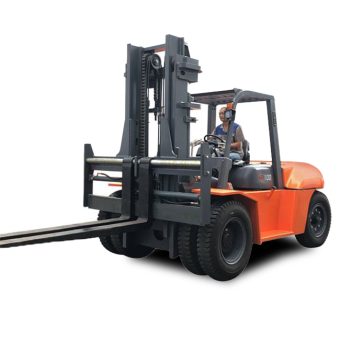
News
Forklifts play a vital role in industries around the world, helping companies move heavy loads and streamline operations in warehouses, construction sites, and other environments. However, not all forklifts are the same, and there is often confusion when it comes to understanding the differences between a standard forklift and an industrial forklift. In this article, we will the key distinctions between these two types of machinery and help clarify their roles, applications, and advantages.

A forklift is a powered industrial truck used to lift and move materials over short distances. Originally developed in the early 20th century, forklifts have since evolved into a wide variety of models suited for different purposes. They are commonly seen in warehouses, retail environments, construction sites, and other sectors where material handling is critical.
Standard forklifts, also known simply as "forklifts," typically come with two forks at the front, used to lift and transport goods placed on pallets. These machines are versatile and can operate in various settings, making them indispensable to industries that need efficient material handling solutions.
Electric Forklifts: Powered by rechargeable batteries, electric forklifts are commonly used indoors where clean and quiet operation is essential.
Diesel and Gasoline Forklifts: These are powered by internal combustion engines, making them suitable for outdoor applications where power and endurance are necessary.
Terrain Forklifts: Designed to operate on rough surfaces and off-road conditions, terrain forklifts are more rugged and powerful than their indoor counterparts.
An industrial forklift is essentially a more specialized and robust version of the standard forklift. They are designed for heavy-duty tasks that require more power, larger load capacities, and enhanced durability. While standard forklifts are suitable for lighter jobs in warehouses and retail spaces, industrial forklifts are built to handle heavier loads in challenging environments, such as manufacturing plants, construction sites, ports, and large-scale distribution centers.
Industrial forklifts often have additional features and specifications that make them distinct from regular forklifts. They are designed for long-term, intensive use and are often more powerful, with a greater lifting capacity, making them the ideal choice for industries that need to move very heavy materials.
The most significant difference between a standard forklift and an industrial forklift is the load capacity. Standard forklifts typically have a load capacity of 3,000 to 5,000 pounds, making them ideal for light to medium-duty tasks. Industrial forklifts, on the other hand, can handle loads ranging from 10,000 to over 30,000 pounds. Some specialized industrial forklifts can lift even heavier loads.
This distinction is crucial for industries where the weight of the materials being moved is a critical factor. For example, in a steel manufacturing plant, where large metal components need to be transported, an industrial forklift with a high load capacity would be the preferred option.
Another major difference lies in the size and design of the machines. Standard forklifts are typically smaller and more compact, which allows them to maneuver easily in confined spaces such as warehouses and retail environments. Industrial forklifts, however, are often larger and bulkier, designed to operate in spacious and rugged environments like manufacturing plants, outdoor yards, or construction sites.
Industrial forklifts are also engineered for durability, with reinforced frames, larger tires, and heavy-duty components that can withstand the wear and tear of demanding work environments.
Both standard and industrial forklifts can be powered by electric batteries, diesel, or gasoline engines. However, industrial forklifts tend to rely more heavily on internal combustion engines, such as diesel or propane, which provide the power needed for lifting heavy loads and continuous operation in tough environments. While electric-powered industrial forklifts are available but often used in settings where zero emissions and lower noise levels are required.
Standard forklifts, especially electric models, are more commonly used indoors, where noise and emissions must be minimized. In contrast, industrial forklifts are frequently used outdoors or in large industrial spaces where emissions and noise are less concern.
The applications of standard and industrial forklifts vary widely due to their capabilities and design. Standard forklifts are best suited for indoor tasks such as:
Moving pallets in warehouses
Stocking goods in retail spaces
Loading and unloading trucks
Industrial forklifts, by contrast, are better suited for heavier and more demanding applications, such as:
Transporting large machinery or equipment
Moving heavy construction materials at building sites
Handling cargo at ports and shipyards
Lifting and moving oversized materials in manufacturing plants
Standard forklifts are usually designed to operate on smooth and even surfaces, which makes them perfect for indoor use. While there are terrain forklifts designed for rough surfaces, standard models typically struggle on uneven ground.
Industrial forklifts, however, are built to handle a wide range of terrains. Many models come equipped with larger, more robust tires that allow them to operate on rough, uneven surfaces such as gravel, dirt, or construction site terrain. This feature is critical for industries that operate in less predictable environments.
Another difference between the two types of forklifts is their maximum lifting height. Standard forklifts generally have a lifting height of around 10 to 15 feet, which is more than adequate for tasks like loading trucks or placing items on high shelves in warehouses.
Industrial forklifts, however, are designed to lift loads to much greater heights, sometimes exceeding 20 feet. This feature is especially useful in industries where materials need to be stacked or stored at significant heights, such as in large-scale distribution centers or shipping ports.
Given the advanced capabilities of industrial forklifts, they tend to be more expensive than standard forklifts. The cost of purchasing or leasing an industrial forklift is higher due to the machine's increased power, durability, and load capacity. Maintenance and operating costs may also be higher for industrial forklifts, especially those with internal combustion engines.
On the other hand, standard forklifts are generally more affordable and require less maintenance, making them a cost-effective option for smaller businesses or those with lighter workloads.
When deciding between a standard forklift and an industrial forklift, it’s important to consider the specific needs of your business. Here are some factors to take into account:
Load Requirements: If your operations involve lifting and moving heavy loads, an industrial forklift is likely the better choice. However, for lighter tasks, a standard forklift should suffice.
Work Environment: If you work in a warehouse or indoor environment with smooth floors, a standard forklift will offer the maneuverability and efficiency you need. But if you work outdoors or on rough terrain, an industrial forklift will provide the durability and power required.
Budget: While industrial forklifts offer superior performance, they come with a higher price tag. Ensure that your budget aligns with the type of forklift you need for your operations.
Forklifts, whether standard or industrial, are essential machines in the world of material handling. While both types of forklifts serve the same basic function—lifting and moving heavy loads—they are designed for very different environments and applications. Standard forklifts are ideal for lighter tasks and indoor environments, while industrial forklifts are built for heavy-duty applications in more challenging conditions.
Understanding the differences between these two types of forklifts is crucial for making informed decisions about which machine is best suited for your business needs. By considering factors such as load capacity, terrain, power source, and cost, you can select the right forklift to improve efficiency and safety in your operations.



